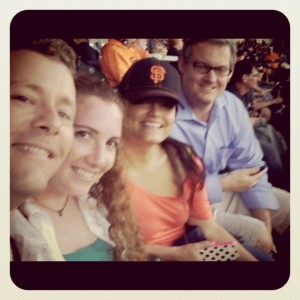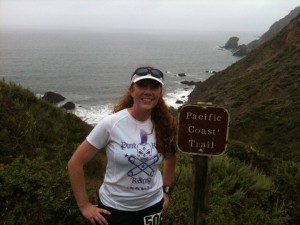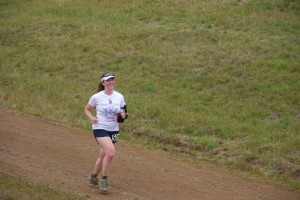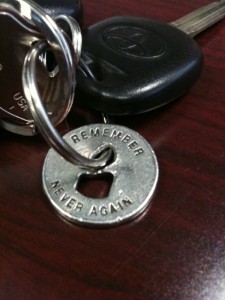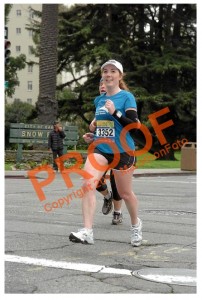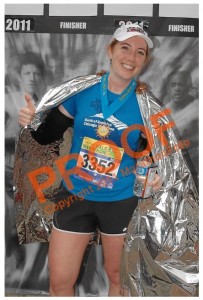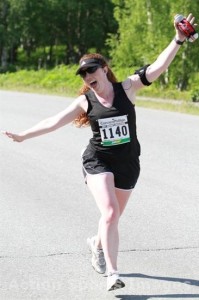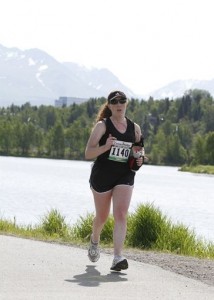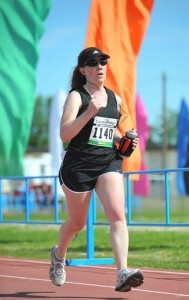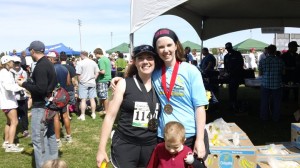Yes, I’m posting on Wednesday about last weekend. That’s because the weekend continued through Monday, though that was a work day. I never really stopped going full-speed-ahead until around 9 p.m. Tuesday, at which point I sat on my couch with my dinner and gazed blankly at the TV “Guide” screen. I never did select anything to watch from that screen. So, yeah, no writing was done then, either. Anyway, here’s the weekend because it was too good to let go undocumented.
Saturday:
Managed to sleep in until around 7. Went for a run — the first time in a week that I was successful, since I’d thrashed my legs on hills the previous Saturday. Stopped at the store, where a customer was quite shocked to learn that Arnold Schwarzenegger is no longer governor of California. “He retired?!” she said. I started to mention something about term limits, but realized it was hopeless. As we parted ways she said, “All I know is that Arnold’s wife is divorcing him!” That NON-NEWS story has infuriated me to no end, so I held my tongue, got in my car, and turned on loud music.
Then I got stuck in lots of traffic but made it to Marin County, where I drove past San Quentin State Prison and actually found myself thinking I should be turning in the entrance I used when I went there a lifetime ago. It’s odd to revel in this gorgeous view of the bay, and at the same time look up at death row, which houses many people whose stories I know too well. Anyway, I kept driving and arrived at Deanne‘s new house, where I helped unload a U-Haul truck. Of course, they moved UPstairs… On the plus side, my first attempt at making sangria seemed to be a success.
My oh-so-great luck continued, and I got stuck in mass amounts of traffic on the way home, too. Once home, I made a failed effort at tidying up my house for company, and made a couple fun signs for marathon spectating. I also used some fruit from said sangria to make myself a drink that actually had a purpose: I was invited to an impromptu party, but I knew I shouldn’t go because I had to be up early the next morning. So I drank alcohol since that would keep me from even thinking about driving. (Justification at its finest.)
Sunday:
Woke up sometime after 5 a.m. Left at 6ish for San Francisco, where I arrived in no time but could not for the life of me find parking near my destination. That took me forever, so I wound up running about nine blocks to get into Golden Gate Park, where I was to meet Sandra and Audrey a bit before mile 16 of the San Francisco Marathon.
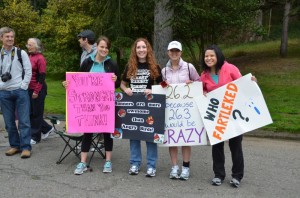
I barely saw speedy Katie in time. Then more friends began passing, and one Lodi friend actually saw me first, though he was doing the running while I just stood there. We cheered for a few hours, then eventually headed downtown to the finish line.

We then walked a mile to lunch at a fun place that Aron had found. All in all, about 25 people were there, many of whom had raced that morning. It was very fun, though of course the sun came out for five whole minutes and burnt my face.
We eventually all parted ways and I went to hang out with a friend for a while. Then I went back downtown to pick up Sam and his wife, drove them south to the airport, then drove back to my house.

I arrived home tired and hungry after 8 p.m., but suddenly got the urge to go for a run. As if I hadn’t been on my feet enough that day… But run I did — 6.5 miles at a pretty fast pace.
Monday:
Woke up early to get to work around 7, so I could leave early. Rushed home after work, rushed around trying once again to clean up my messy home, and then my friend Rachael arrived. We drove to the train station and headed into San Francisco (my third trip across the bay in as many days — never a bad thing, in my opinion).
Arrived in San Francisco, walked a mile to AT&T Park, found my friend Rick and his friend Donovan, had drinks, then made our way into the ballpark. I’ve had the privilege of going to a number of Giants games recently, and I love everything about them — the game, the people-watching, the food, the weather, always good company, and a great view of the bay. Good times.
Rachael and I didn’t get home until midnight, and then we were talking until 1 a.m.
And that, folks, is how you pack a lot into one weekend. Whew! A number of my recent weekends have been that busy, and I must say that I am happy about it. Before I tore apart my life and began reassembling it last year, I had a lot of mellow, uneventful weekends. I didn’t mind too much because I don’t get bored, but I vaguely knew I was missing something. I was missing people, and experiences that don’t come along any day. I can catch up on sleep later, but I can’t always see people crying with happiness as they cross the finish line of a marathon, or have some give me a tolerant eye-roll when I make an especially lame joke. Anything that results in a smile is worth the effort.
